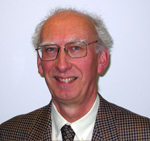Professor Tony Champion

Tony Champion has four decades of research experience at Newcastle University, focusing primarily on population change and migration and their implications for regional and local population profiles and planning policies. He became Professor of Population Geography in 1996 and is now Emeritus, located within the university‟s Centre for Urban and Regional Development Studies (CURDS). He has authored or co-authored many books, papers and reports and has acted as adviser to the UN Population Division, the International Union for the Scientific Study of Population (IUSSP) and the UK government.
He has also served on a number of committees including the Council of the Royal Geographical Society, the Regional Studies Association and the ESRC Census Programme Advisory Committee. He was elected Academician of Social Sciences in 2010 and Vice President of the British Society for Population Studies for 2011-2013.
His three main current projects are tracking the economic dynamism of Britain‟s largest city regions through the latest recession (with Alan Townsend, Durham University), testing the extent to which Pennine England is becoming a single functionally-integrated polycentric urban region (with Mike Coombes, also in CURDS) and assessing the relevance of the „escalator region‟ effect for England‟s secondary agglomerations (with Mike Coombes and Ian Gordon, London School of Economics, for the ESRC Spatial Economics Research Centre, SERC). Other projects have examined the role of migration in changing the socio-demographic profile of British cities (for Joseph Rowntree Foundation), patterns of migration and population change in English cities (for the State of the English Cities Report), demographic aspects of the viability and self-containment of geographical economies and the regional and local impacts of central and eastern European labour migration (these last two for the previous government‟s New Horizons programme).
Among his other work over the past decade have been projects on the impacts of migration on regional population change, migration in rural England, population change and ageing in rural England, migration and residential preferences, migration between metropolitan and non-metropolitan areas, the evidence base for tracking frequent movers, and the skills profile of Scottish migration. He was team leader for the UK government‟s project on the determinants of migration flows and acted as adviser to the follow-up project on developing a migration model (MIGMOD). In 1999-2002 he chaired an IUSSP Working Group on the identification and measurement of new forms of urbanization, funded by the Rockefeller and Mellon Foundations.
A great deal of his research over the years has relied on Population Census data. Currently in his SERC project he is using the ONS Longitudinal Study, which links together the records of recent Censuses for an anonymised sample of individuals, to see how much difference exists between England‟s cities in the speed with which their residents advance up the occupational ladder. In other work, he has used the 2001 Census Special Migration Statistics to measure the role of migration in changing places‟ socio-demographic profiles and its Samples of Anonymised Records to discover how far people‟s length of commute varies according to where they live after allowing for differences in their personal characteristics. He is looking forward to the release of the 2011 Census data sets for a variety of applications including examining the strength of re-urbanization tendencies since 2001, looking at 30 years of change in commuting patterns since 1981 and tracking individuals‟ career progression across five census points from 1971.